| Listing 1 - 10 of 99 | << page >> |
Sort by
|
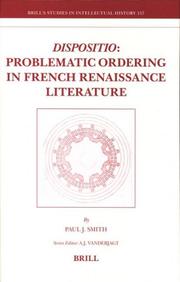
ISBN: 9789004163058 9004163050 Year: 2007 Volume: 157 Publisher: Leiden Brill
Abstract | Keywords | Export | Availability | Bookmark
 Loading...
Loading...Choose an application
- Reference Manager
- EndNote
- RefWorks (Direct export to RefWorks)
Book
ISBN: 2200212569 9782200212568 Year: 1995 Volume: *3 Publisher: Paris Collin
Abstract | Keywords | Export | Availability | Bookmark
 Loading...
Loading...Choose an application
- Reference Manager
- EndNote
- RefWorks (Direct export to RefWorks)
Book
ISBN: 091705881X 9780917058813 Year: 1992 Volume: 77 Publisher: Lexington (Ky.): French Forum,
Abstract | Keywords | Export | Availability | Bookmark
 Loading...
Loading...Choose an application
- Reference Manager
- EndNote
- RefWorks (Direct export to RefWorks)
Book
ISBN: 9782600012904 2600012907 Year: 2009 Volume: 92 Publisher: Genève : Droz,
Abstract | Keywords | Export | Availability | Bookmark
 Loading...
Loading...Choose an application
- Reference Manager
- EndNote
- RefWorks (Direct export to RefWorks)
La satire, peut-être plus que d’autres formes littéraires, profite considérablement de la renaissance de la culture et des lettres gréco-latines qui marque le seizième siècle. Lucilius, Perse, Horace, Juvénal et Lucien de Samosate deviennent les principaux modèles à suivre des humanistes. La satire est sans aucun doute la forme d’expression par excellence du syncrétisme de la Renaissance, lequel combine érudition humaniste et verve populaire, ambitions morales et comique parfois grossier, objectifs pédagogiques et divertissement, ou encore douceur horatienne et indignation juvénalesque. Ce sont bien ces contrastes, résumés dans la formule horatienne du ridentem dicere verum, qui donnent naissance à une écriture engagée et néanmoins esthétique. En se déliant de ses racines génériques, la satura romaine, la satire s’ouvre notamment aux textes en prose mais aussi au drame satyrique grec, aux farces et sotties médiévales ou bien au coq-à-l’âne. Ainsi s’en trouve enrichi le discours satirique qui, fondé sur la varietas et l’hybriditas, produit un véritable amalgame des traditions antique, médiévale et italienne, et se pose en technique parasitaire de tous les genres. En s’étalant du théâtre de Pierre Gringore à la Satyre Ménippée, les études éditées par Bernd Renner définissent une poétique de la satire et constituent un nouveau plaidoyer pour la satirologie
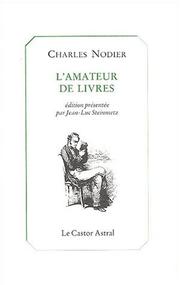
ISBN: 9782859202200 285920220X Year: 2007 Publisher: Place of publication unknown Castor astral
Abstract | Keywords | Export | Availability | Bookmark
 Loading...
Loading...Choose an application
- Reference Manager
- EndNote
- RefWorks (Direct export to RefWorks)
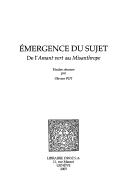
ISBN: 2600009965 9782600009966 Year: 2005 Volume: 73
Abstract | Keywords | Export | Availability | Bookmark
 Loading...
Loading...Choose an application
- Reference Manager
- EndNote
- RefWorks (Direct export to RefWorks)
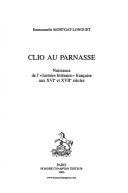
ISBN: 2745310909 9782745310903 Year: 2006 Volume: 59 Publisher: Paris : Editions Honoré Champion,
Abstract | Keywords | Export | Availability | Bookmark
 Loading...
Loading...Choose an application
- Reference Manager
- EndNote
- RefWorks (Direct export to RefWorks)
Book
ISBN: 2700305132 9782700305135 Year: 1986 Volume: 2 Publisher: Paris Arthaud
Abstract | Keywords | Export | Availability | Bookmark
 Loading...
Loading...Choose an application
- Reference Manager
- EndNote
- RefWorks (Direct export to RefWorks)
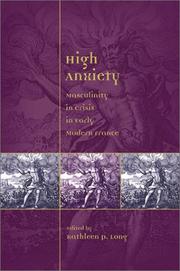
ISBN: 0943549914 0943549922 9780943549927 Year: 2002 Volume: 59 Publisher: Kirksville, Mo. Truman State University Press
Abstract | Keywords | Export | Availability | Bookmark
 Loading...
Loading...Choose an application
- Reference Manager
- EndNote
- RefWorks (Direct export to RefWorks)
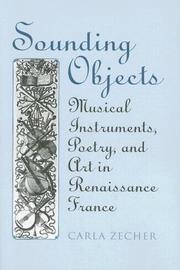
ISBN: 9781442628199 1442628197 9780802090140 0802090141 1442659629 Year: 2007 Publisher: Toronto, Ont. University of Toronto Press
Abstract | Keywords | Export | Availability | Bookmark
 Loading...
Loading...Choose an application
- Reference Manager
- EndNote
- RefWorks (Direct export to RefWorks)
"In Sounding Objects, Carla Zecher studies the representation of musical instruments in French Renaissance poetry and art, arguing that the efficacy of these material objects as literary and pictorial images was derived from their physical characteristics and acoustic properties, as well as from their aesthetic product." "Sounding Objects is concerned with ways in which musical culture provided poets with a rich, nuanced vocabulary for reflecting on their own art and its roles in courtly life, the civic arena, and salon society. Poets not only depicted the world of musical practice but also appropriated it, using musical instruments figuratively to establish their literary identities. Drawing on music treatises and archival sources as well as poems, paintings, and engravings, this study aims to enrich our understanding of the interplay of poetry, music, and art in this period, and highlights the importance of musical materiality to Renaissance culture."--Jacket.
French literature -- 16th century -- History and criticism. --- Music and literature. --- Musical instruments in art. --- French literature --- Music and literature --- Musical instruments in art --- Romance Literatures --- Languages & Literatures --- French Literature --- Literature and music --- History and criticism --- E-books --- Instruments de musique dans l'art --- Literature --- Music --- anno 1500-1599 --- France --- History and criticism. --- Littérature française --- Musique et littérature --- Histoire et critique --- French literature -- 16th century -- History and criticism --- French literature - 16th century - History and criticism --- Frankreich --- La France --- République Française --- Francija --- Französische Republik --- Empire Français --- Royaume Français --- Fränkische Republik --- Ṣārfat --- Repubblica Francese --- Franzosen --- Musikinstrument --- Literatur --- Kunst --- Geschichte
| Listing 1 - 10 of 99 | << page >> |
Sort by
|

 Search
Search Feedback
Feedback About UniCat
About UniCat  Help
Help News
News